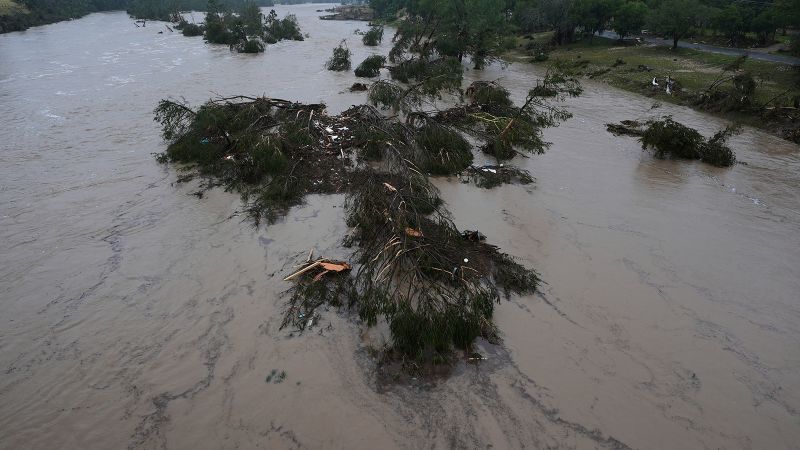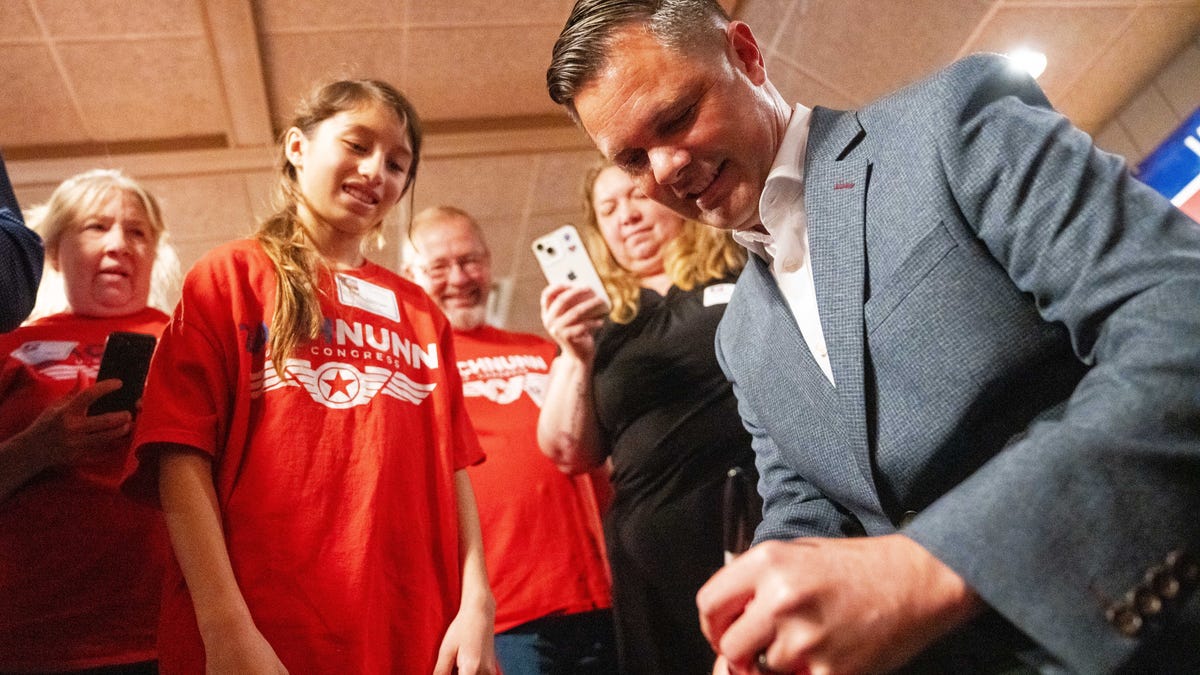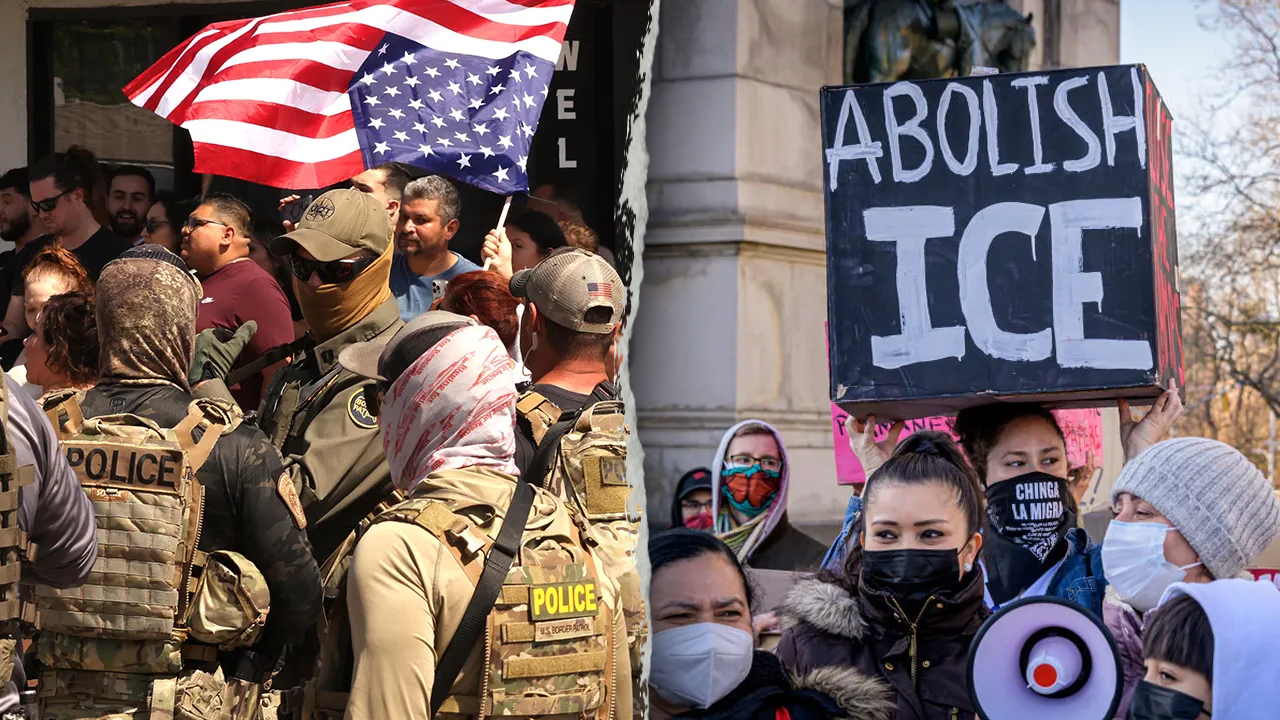News
Who Paid for Trump’s Transition to Power? The Donors Are Still Unknown.

After six weeks in office, President Trump has not disclosed the names of the donors who paid for his transition planning, despite a public pledge to do so.
Preparing to take power and fill thousands of federal jobs is a monthslong project that can cost tens of millions of dollars. Previous presidents, including Mr. Trump himself in 2017, used private contributions as well as federal money to foot the bill.
Those presidents made public the names of donors and their contributions within 30 days of taking office, as required under agreements they had signed with the departing administration.
The agreements offered the transition teams millions of dollars in federal funding and a variety of services, such as security, office space and the use of government servers, in exchange for following strict rules on fund-raising, including the disclosure obligation.
Mr. Trump’s 2024 transition team declined to sign such an agreement, stating in late November that it wanted to “save taxpayers’ hard-earned money” by forgoing federal support and financing its operations privately. At the same time, it promised that “donors to the transition will be disclosed to the public” and volunteered that it would “not accept foreign donations.” It did not state whether it would limit individual contributions to $5,000, as previous administrations had.
No disclosures about that financing have been made by the Trump transition, and neither it nor administration officials have given indications of a timeline for releasing that information.
Karoline Leavitt, the White House press secretary, did not respond to requests for comment.
The leaders of the Trump transition were Howard Lutnick, now the commerce secretary, and Linda McMahon, who was confirmed Monday as the education secretary. Neither Mr. Lutnick nor Ms. McMahon responded to requests for comment.
A spokesperson for the General Services Administration, which works closely with presidential transitions, said in a statement that the “the Trump-Vance Transition Team is not required to publicly disclose transition-related donations since they did not accept the services and funds outlined in” the memorandum of understanding that the agency offered the transition last fall.
Experts on government accountability noted that without a public accounting of donors, it was exceedingly difficult to know whether individuals or corporations had tried to buy influence with the new administration behind closed doors.
“Transparency on the question of private interests influencing public power is really fundamental to the health of our system, and we’re seeing that break down in very big ways,” said Max Stier, the president of the Partnership for Public Service, a nonpartisan nonprofit that promotes best practices in the federal government. “They made a promise. They owe it to the public to fulfill that.”
Mr. Trump’s previous transition, after the 2016 election, had roughly 120 employees, used government office space and email servers and received $2.4 million in federal funds. In exchange, it disclosed that more than 3,000 people, companies and advocacy organizations donated $6.5 million to the effort, with those contributions capped at $5,000 apiece, as required by the G.S.A. agreement.
Far less is known about the financing of the most recent Trump transition. Operating largely out of private offices in West Palm Beach, Fla., and eschewing government servers, the transition appears to have heavily involved the billionaire Elon Musk — who spent at least $288 million to help elect Mr. Trump and now leads the so-called Department of Government Efficiency — as well as a number of other technology industry executives.
Trump Vance 2025 Transition Inc., as the transition is formally known, was registered in Florida as a “dark money” nonprofit that does not have to disclose its donors to the Internal Revenue Service. The funds cannot be used to enrich the transition’s officers, but they can be directed to support political candidates or to pay Mr. Trump’s businesses for services provided.
Mr. Trump’s post-election fund-raising was not limited to the transition. His inaugural committee, which is a separate entity, brought in more than $170 million in private donations as of early January, a record.
Unlike the transition, the inaugural committee is legally required to report donations to the Federal Election Commission. Although the inaugural committee has not yet filed a report with that regulator, a number of high-profile donors have revealed their contributions. Many of those entities have government contracts or are engaged in legal cases involving federal agencies.
Among them are the technology companies Amazon, Meta, Google and Microsoft, each of which donated $1 million. Kraken, a cryptocurrency exchange that was sued by the Securities and Exchange Commission in 2023, put in $1 million as well. On Monday, the S.E.C. said it was dropping the case voluntarily. Last week, it dismissed a suit against another cryptocurrency exchange, Coinbase, which also donated $1 million to Mr. Trump’s inauguration.
David A. Fahrenthold contributed reporting.

News
Senate committee details failures by Secret Service in preventing Trump shooting

Then-candidate Donald Trump is rushed offstage by U.S. Secret Service agents after being struck by a bullet during a rally on July 13, 2024, in Butler, Pa.
Anna Moneymaker/Getty Images
hide caption
toggle caption
Anna Moneymaker/Getty Images
A Senate committee report released Sunday blames the U.S. Secret Service for a “cascade of preventable failures” that led up to the assassination attempt against then-presidential candidate Donald Trump during a rally in Butler, Pa., last summer.
Trump was injured in the shooting when a bullet whizzed past his head, grazing his ear. Two attendees were wounded, and rally-goer and former fire chief Corey Comperatore was killed.
A Secret Service sniper shot and killed the perpetrator, 20-year-old Thomas Matthew Crooks of Bethel Park, Pa.

In its report, the Senate Homeland Security and Governmental Affairs Committee said the Secret Service’s “lack of structured communication was likely the greatest contributor to the failures” on the day of the rally. The report was released by the committee’s chairman, Sen. Rand Paul, R-Ky.
For instance, the Secret Service security room agent, who is responsible for collecting and disseminating information, learned about a suspicious person with a rangefinder from a counterpart in the Pennsylvania State Police roughly 25 minutes before the shooting. That agent relayed the report to a fellow Secret Service agent in the room, but the information did not go out over the radio or make it to Trump’s security detail in time for them to prevent him from taking the stage.
There were communication gaps both within the Secret Service hierarchy, and also among the agency and the state and federal law enforcement agencies on scene, the committee said.
There were organizational mistakes, too. The committee noted that one of the Secret Service countersniper teams protecting Trump at the Butler rally had an obstructed view of the roof of the nearby American Glass Research building where Crooks was located.
The report, released one year to the day after the shooting, also found that the Secret Service had denied some resources to Trump’s detail during the 2024 presidential election and said former Secret Service Director Kimberly Cheatle had falsely testified to Congress when she said no requests were denied for the Butler rally.

In a statement on Sunday, Secret Service Director Sean Curran said the agency “took a serious look at our operations” following last year’s shooting and “implemented substantive reforms to address the failures that occurred that day.”
The agency announced last week that it had put in place 21 of 46 recommendations made by congressional oversight bodies, including streamlining communication procedures and clarifying the responsibilities of advance teams.
The Secret Service also said it had disciplined six employees in relation to the Butler shooting, with suspensions ranging from 10 to 42 days without pay. Still, the committee said in its report that “not a single person has been fired.”
Curran, who was one of the agents who surrounded Trump as shots were fired in Butler, added in his statement that the Secret Service will “continue to work cooperatively with the committee as we move forward in our mission.”
News
Texas flood death toll rises as search continues for victims – UPI.com

A young girl carries a stuffed bear during a vigil for those lost in the Texas floods at the “Wall of Hope” fence memorial in Kerrville, Texas, on Friday. Photo by Dustin Safranek/EPA
July 12 (UPI) — More than 2,100 searchers from a dozen Texas Counties, other states and Mexico are continuing recovery efforts to find more victims of the deadly flash flooding in central Texas.
The confirmed-deaths toll rose to 129 with 170 still missing after officials in Travis and Kerr counties reported the recovery of more bodies, USA Today reported.
Most of the dead, 103, were found in Kerr County, including 36 children and 67 adults.
Among those missing is Volunteer Fire Chief Michael Phillips, whose rescue vehicle was swept away when flash flooding struck Burnet County.
Search crews later found the vehicle, but Phillips was not inside.
“Specialist teams and equipment continue to deploy into the search area and work themselves to exhaustion or until nightfall in the effort to find him,” the Burnet County Sheriff’s Office announced on Saturday, according to USA Today.
Many states and Mexico sent entire first responder teams, including Indiana, which deployed personnel from 15 fire and police departments to help the recovery effort, The New York Times reported.
Many volunteer groups also traveled to Kerr County, where most search efforts are focused.
“It’s overwhelming to see so many people come and help in the search,” Kerrville, Texas, resident Amy Vanlandingham told The New York Times.
“This is our town,” she said. “I do it so I can sleep.”
The Guadalupe River’s flash flooding during the early morning hours of July 4 decimated several local camps and other popular visitor destinations on one of their busiest days of the year.
The bodies of victims likely are situated in debris fields located along more than 100 miles of narrow and shallow valleys along the Guadalupe River in the mostly rural area of Texas Hill Country.
President Donald Trump, first lady Melania Trump and others visited Kerr County on Friday to assess the situation and better gauge the need for federal assistance.
News
'Helping every dang soul': Beloved camp director was among those lost in Texas flooding

Just after the summer session ended in late June, Heart O’ the Hills camper Sydney Sutton sent this photo to the camp’s director, Jane Ragsdale, who was killed in the July 4 flooding in Kerr County, Texas.
Erika Sutton
hide caption
toggle caption
Erika Sutton
Jane Ragsdale spent her summers by the Guadalupe, the very river that killed her a week ago today in the catastrophic July Fourth flood. Mention her name in Kerrville, Texas, this week, and folks tend to do two things: tear up and smile.
“I mean I can’t tell you how many people, acquaintances of mine say, ‘My dear, dear friend died.’ And then they said, ‘Did you know Jane Ragsdale?’ and I say, ‘Yeah, I did,’ ” said Karen Taylor, who lives in nearby Hunt, Texas. For her, Ragsdale was West Kerr County personified.
“Everybody’s friendly here, but she embodied that friendliness and generosity and love for others. I just can’t imagine life without her,” Taylor said.

Ragsdale, who was in her late 60s, did a lot of things, but she’s best known as the owner and director of Heart O’ the Hills camp for girls. She was born into the business.

Jane Ragsdale ran the Heart O’ the Hills camp for girls in Kerr County, Texas. The camp was between sessions when the deluge hit. The only person killed there was Ragsdale.
Kerrville Daily Times
hide caption
toggle caption
Kerrville Daily Times
Her family bought a boys’ camp, Camp Stewart in 1966, the year Ragsdale turned 9. They bought Heart O’ the Hills about a decade later. Ragsdale helped run it from the start. By 1988, she was in charge.
Unlike Camp Mystic, the girls camp where at least 27 perished when the deluge hit, Heart O’ the Hills was between sessions. The only person killed there was Ragsdale.

“I’ve never in my life met someone like Jane,” said Kathy Simmons, who was a good friend of Ragsdale’s.
Simmons was at Heart O’ the Hills picking up her granddaughter just the week before the flood, on the last night the camp was open.
“We had a candlelight service on the river at 9 p.m., and it was so beautiful. There were prayers and there were songs,” Simmons said. “Jane always led the children in songs. And every one of those girls and those counselors absolutely idolized her.”

After Heart O’ the Hills camper Sydney Sutton sent a photo of herself to Jane Ragsdale, the camp director wrote this letter back to Sydney.
Erika Sutton
hide caption
toggle caption
Erika Sutton
The summer camps on the Guadalupe River in Kerr County are institutions. Generations of girls and boys go through them, often forming life-long attachments. Simmons considered Ragsdale the heart and soul of her camp, both spiritual leader and educator.
“I mean, Jane taught these girls how to change a tire, how to ride a horse, how to swim, how to shoot a gun, archery, cooking. I mean, the necessities of life,” Simmons said.
In the off-season, when she wasn’t running the camp, Ragsdale often traveled to Guatemala, where she volunteered as an interpreter and a project organizer. It was mission work she started doing when she was 19 and studying journalism. She was a badass. But she was also about the sweetest person in town.
“Jane was one of the most genuine, kind, honest people and very intelligent, very warm,” recalls Mindy Wendele, president and CEO of the Kerrville Area Chamber of Commerce. “She had a smile that you knew Jane Ragsdale was smiling at you.”
Wendele grew up with Ragsdale, who she describes as a real go-getter: deeply involved in the Chamber of Commerce, a board member of the local liberal arts college, a class leader in high school.
“Anytime that we were out with Jane and her family at Heart O’ the Hills, we had just a fabulous time, just fabulous memories out there,” Wendele said.
Now, with some of the camps and almost all of the riverfront in ruins, Kerr County faces a monumental clean-up and rebuilding effort.
Another reason to miss Jane Ragsdale.
“Oh, she would be out there volunteering. She would be out there clearing property,” Simmons said. “She would have her boots on, her gloves on, she would be helping every dang soul that needed to be helped.”
So the flood took one of Kerr County’s most capable citizens, but Ragsdale’s influence on the community and the girls who came through Heart O’ the Hills camp is going to last a long time.
-

 Politics1 week ago
Politics1 week agoVideo: Trump Signs the ‘One Big Beautiful Bill’ Into Law
-

 World1 week ago
World1 week agoRussia-Ukraine war: List of key events, day 1,227
-

 Education1 week ago
Education1 week agoOpinion | The Ugliness of the ‘Big, Beautiful’ Bill, in Charts
-

 News3 days ago
News3 days agoVideo: Trump Compliments President of Liberia on His ‘Beautiful English’
-

 News1 week ago
News1 week agoDeath toll from Texas floods rises to 24 as search underway for more than 20 girls unaccounted for | CNN
-

 News6 days ago
News6 days agoTexas Flooding Map: See How the Floodwaters Rose Along the Guadalupe River
-
Business6 days ago
Companies keep slashing jobs. How worried should workers be about AI replacing them?
-

 Technology1 week ago
Technology1 week agoCyberpunk Edgerunners 2 will be even sadder and bloodier















